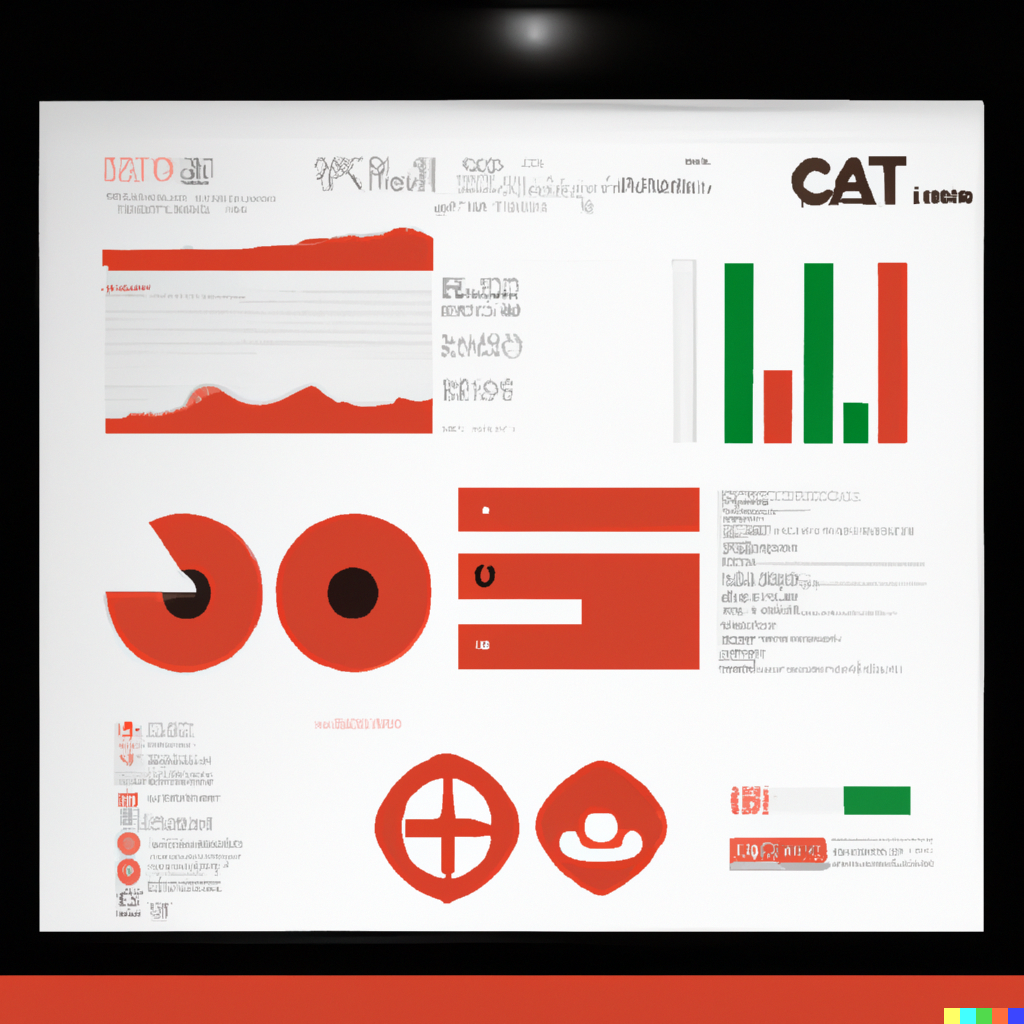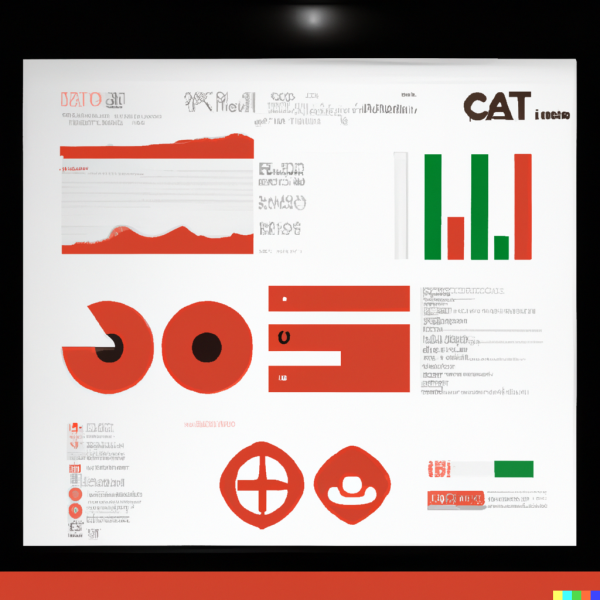The Importance of Call Reporting in Call Center Management
Call reporting is a critical tool for call centers to track and analyze phone call data in order to continually improve the quality of service they provide to customers. In this guide, we will explore the basics of call reporting, including what it is, the types of data that are collected and analyzed, and why it is important in call centers. We will also discuss how call reporting can be used to measure performance and identify areas for improvement. By understanding the role of call reporting in call center management, organizations can better optimize their operations and provide a high level of service to their customers.
Call Reporting Definition
Call reporting refers to the process of collecting and analyzing data related to phone calls made to and from a call center. This data can include information on call volume, call duration, call abandonment rates, first-call resolution rates, average handling time, and customer satisfaction scores. Call reporting is typically carried out using specialized software or other tools that are designed to track and analyze phone call data in real-time or near real-time.
Purpose of Call Reporting
The purpose of call reporting is to provide call centers with insights into the performance of their operations and to identify areas for improvement. By analyzing call data, call centers can identify issues that may be causing customer frustration, such as long hold times or low first-call resolution rates. They can also identify trends and patterns that may indicate opportunities for improvement, such as identifying periods of high call volume and adjusting staffing levels accordingly.
In addition to helping call centers improve the quality of service they provide, call reporting is also an important tool for measuring performance and setting goals. Call centers can use call data to compare the performance of individual agents or teams and to benchmark their performance against industry standards or other similar organizations. By regularly reviewing call data and using it to set performance targets, call centers can work to continually improve their operations and provide the best possible customer experience.
Types of Data Collected in Call Reporting
In this section, we will explore the types of data that are collected and analyzed in call reporting. As we will see, there are a wide range of metrics that are tracked in call reporting, each of which provides valuable insights into the performance of a call center. By understanding the various data points that are collected and analyzed in call reporting, organizations can better understand the strengths and weaknesses of their operations and identify areas for improvement.
Call Volume
Call volume refers to the number of calls received and made by a call center. Tracking call volume is an important part of call reporting because it allows organizations to understand the demand for their services and to ensure that they have sufficient staffing levels to handle the volume of calls they receive.
There are several ways that call volume can be measured, including the number of incoming calls, the number of outgoing calls, and the total number of calls (incoming and outgoing combined). By analyzing call volume data over time, call centers can identify trends and patterns that may indicate changes in demand for their services. For example, a sudden increase in call volume may indicate a spike in customer interest or a problem that is causing customers to call more frequently.
In addition to tracking overall call volume, call centers may also track call volume by specific time periods, such as by hour of the day or day of the week. This can be useful for identifying peak periods of demand and adjusting staffing levels accordingly. For example, a call center that experiences a higher volume of calls during the evening hours may need to have more agents available during that time in order to handle the increased volume of calls.
Call Duration
Call duration refers to the length of time that a phone call lasts. In call reporting, call duration is typically measured in minutes and seconds. Tracking call duration is an important part of call reporting because it provides insights into the efficiency of a call center's operations.
There are several ways that call duration can be measured, including:
- Average call duration: This is the average length of time that a call lasts. Tracking average call duration can help call centers understand how long it takes, on average, to resolve customer inquiries or issues.
- Median call duration: This is the middle value in a set of call duration data. Tracking median call duration can provide a more accurate representation of the typical length of a call, as it is less affected by outliers (very long or very short calls).
- Longest call duration: This is the length of the longest call in a given time period. Tracking the longest call duration can help call centers identify calls that may be taking longer than necessary to resolve, potentially indicating an issue that needs to be addressed.
By analyzing call duration data, call centers can identify trends and patterns that may indicate opportunities for improvement. For example, if the average call duration is significantly longer than the median call duration, it may indicate that a high percentage of calls are taking longer than necessary to resolve.
This could be due to a variety of factors, such as a lack of resources, poorly trained agents, or complex customer inquiries. By identifying and addressing these issues, call centers can work to reduce call duration and improve the efficiency of their operations.
Call Abandonment Rate
The call abandonment rate refers to the percentage of calls that are terminated before being answered by an agent. In call reporting, the call abandonment rate is calculated by dividing the number of abandoned calls by the total number of calls received. Tracking the call abandonment rate is an important part of call reporting because it provides insights into the customer experience and can help identify issues that may be causing frustration.
There are several factors that can contribute to a high call abandonment rate, such as long hold times, difficulty navigating an automated phone system, or a lack of available agents. A high call abandonment rate can indicate that customers are becoming frustrated and are giving up on trying to reach an agent. This can be particularly problematic for businesses and organizations that rely on phone calls as a primary means of communication with customers, as a high call abandonment rate can lead to a decrease in customer satisfaction and loyalty.
To reduce the call abandonment rate, call centers can take a variety of steps, such as increasing the number of available agents, streamlining the automated phone system, or providing more information to customers on hold. By analyzing call data and identifying the root causes of a high call abandonment rate, call centers can work to improve the customer experience and reduce frustration.
First Call Resolution Rate
The first call resolution rate (FCR) refers to the percentage of calls that are resolved on the first attempt. In call reporting, FCR is calculated by dividing the number of calls that are resolved on the first attempt by the total number of calls received. Tracking the FCR is an important part of call reporting because it provides insights into the efficiency of a call center's operations and can help identify issues that may be causing frustration for customers.
A high FCR indicates that a large percentage of calls are being resolved on the first attempt, which is typically a positive outcome for both the call center and the customer. Resolving a call on the first attempt can save time and resources for the call center, and it can also improve the customer experience by avoiding the need for customers to make additional calls or follow up with the call center.
On the other hand, a low FCR may indicate that a high percentage of calls are not being resolved on the first attempt, potentially requiring customers to follow up with the call center or requiring additional resources to resolve the issue. This can be frustrating for customers and can lead to a decrease in satisfaction and loyalty.
To improve the FCR, call centers can take a variety of steps, such as providing additional training for agents, streamlining processes, or improving the availability of resources. By analyzing call data and identifying the root causes of a low FCR, call centers can work to improve the efficiency of their operations and provide a better customer experience.
Average Handling Time
Average handling time (AHT) refers to the average amount of time it takes for an agent to resolve a call. In call reporting, AHT is calculated by dividing the total amount of time spent on calls by the number of calls. Tracking AHT is an important part of call reporting because it provides insights into the efficiency of a call center's operations and can help identify issues that may be causing frustration for customers.
A low AHT is good for the call center and the customer because it means calls are being resolved fast. A low AHT can save the call center time and resources and improve the customer experience by reducing hold times and calls.
A high AHT may mean calls are taking too long to resolve, requiring more resources or frustrating customers. A high AHT might also indicate inefficiency or a lack of resources, leading to higher call center costs.
Call centers can improve AHT by educating agents more, streamlining operations, and increasing resources. By evaluating call data and identifying the causes of a high AHT, call centers can enhance efficiency and customer service.
Customer Satisfaction Scores
Customer satisfaction scores refer to ratings or survey responses provided by customers after a call with a call center. In call reporting, customer satisfaction scores are typically collected through surveys that are sent to customers after a call is completed. Tracking customer satisfaction scores is an important part of call reporting because it provides insights into the quality of service being provided by the call center and can help identify areas for improvement.
There are a variety of ways that customer satisfaction scores can be collected and analyzed, such as through online surveys, phone surveys, or in-person interviews. Customers may be asked to rate their satisfaction on a scale (such as 1-5 or 1-10) or to provide written comments about their experience.
By analyzing customer satisfaction scores, call centers can identify trends and patterns that may indicate areas for improvement. For example, if a high percentage of customers are rating their satisfaction as low or leaving negative comments, it may indicate a problem that needs to be addressed. On the other hand, if a high percentage of customers rate their satisfaction as high or leave positive comments, it may indicate that the call center is providing high-quality service.
Importance of Call Reporting in Call Centers
We will discuss the significance of call reporting in call centers in this part. We'll see that call reporting is an essential tool for call centers to track and analyze call data in order to continuously raise the bar on the level of customer service they offer. Call centers can pinpoint problems, establish performance objectives, and track development over time by comprehending the many data points that are gathered and examined in call reporting.
Track and Analyze Call Data
Call tracking and analysis is the process of gathering and examining information about phone calls made to and from a call center. Data on call volume, call duration, call abandonment rates, first call resolution rates, average handling time, and customer satisfaction ratings may all be found in this report.
Data analytics platforms, call center software, customer relationship management (CRM) systems, and other tools and technologies can all be utilized to track and analyze call data. Typically, these solutions enable call centers to gather and retain call data in real-time or almost real-time, as well as to produce reports and analytics based on this data.
Call centers can acquire useful insights into the performance of their operations and pinpoint areas for development by recording and analyzing call data. Data on call volume, for instance, can be used to gauge customer demand for a call center's offerings and modify staffing numbers accordingly. Data on call length and resolution rates can be utilized to spot productivity problems or places where consumers could be irate. Additionally, information on customer satisfaction levels can aid call centers in understanding the level of service they are delivering and pinpointing areas for development.
Identify and Address Issues
Identifying and addressing issues refers to the process of identifying problems or areas for improvement within a call center, and taking steps to resolve or address those issues. This is a critical part of call center management, as it helps organizations ensure that they are providing high-quality service to their customers and continually improving their operations.
There are a variety of ways that call centers can identify and address issues, such as by analyzing call data, conducting surveys or focus groups with customers, or soliciting feedback from agents. By regularly collecting and reviewing this information, call centers can identify trends and patterns that may indicate problems or areas for improvement.
Once an issue has been identified, call centers can take a variety of steps to address it. For example, if a high call abandonment rate is identified, call centers may increase the number of available agents or streamline their automated phone system in order to reduce hold times.
Trends and Patterns
Identifying trends and patterns refers to the process of analyzing data over time in order to identify trends or patterns that may indicate opportunities for improvement. This is a critical part of call center management, as it allows organizations to identify issues that may not be immediately apparent and to make data-driven decisions about how to improve their operations.
There are a variety of data points that can be analyzed in order to identify trends and patterns, such as call volume, call duration, call resolution rates, and customer satisfaction scores. By regularly collecting and reviewing this data, call centers can identify trends and patterns that may indicate issues or areas for improvement.
For example, if a call center notices that call volume is consistently higher on certain days of the week, they may adjust staffing levels accordingly to ensure that there are enough agents available to handle the increased volume of calls.
Call Reporting to Measure Performance
In this section, we'll talk about how call reporting can be used to assess call center performance and pinpoint potential improvement areas. Call centers can compare their performance to industry standards, set performance goals, and monitor advancement over time by routinely gathering and reviewing call data. Organizations can more effectively improve their operations and offer their clients a high level of service by comprehending the role of call reporting in call center management.
Set Performance Goals and Track Progress
Using call reporting data to set performance goals and track progress refers to the process of using data collected and analyzed through call reporting to set performance targets and measure progress over time. This is a critical part of call center management, as it allows organizations to continually improve their operations and provide the best possible customer experience.
There are a variety of ways that call centers can use call reporting data to set performance goals and track progress. For example, they may compare their performance to industry benchmarks or to the performance of similar organizations in order to identify areas for improvement. They may also set specific performance targets, such as reducing the average handling time or increasing the first call resolution rate and use call data to track progress towards these targets over time.
Call centers can spot trends and patterns that might point to areas for improvement by routinely gathering and examining call data. They can use this information to define performance objectives and monitor their progress over time toward those objectives. For instance, if a call center finds that some days of the week typically have a higher call abandonment rate than others, they can set a target to lower that rate on those days and monitor their success over time.
Compare the Performance of Individual Agents or Teams
Comparing the performance of individual agents or teams refers to the process of using call reporting data to evaluate and compare the performance of individual agents or teams within a call center. This is a common practice in call center management, as it allows organizations to identify top performers and identify areas for improvement among individual agents or teams.
There are a variety of metrics that can be used to compare the performance of individual agents or teams, such as call volume, call duration, call resolution rates, and customer satisfaction scores. By regularly collecting and reviewing this data, call centers can compare the performance of individual agents or teams and identify areas for improvement.
For example, if a call center notices that one team has a consistently higher call abandonment rate than other teams, they may investigate the root cause of this trend and take steps to address it. Similarly, if a call center notices that one individual agent has consistently higher customer satisfaction scores than other agents, they may consider recognizing or rewarding that agent for their performance.
Benchmark Performance Against Industry Standards
Benchmarking performance against industry standards refers to the process of comparing a call center's performance to industry benchmarks or standards in order to identify areas for improvement. This is a common practice in call center management, as it allows organizations to understand how their performance compares to others in their industry and identify opportunities for improvement.
Call volume, call duration, call resolution rates, and customer satisfaction scores are some examples of the metrics that can be used to assess performance in comparison to industry norms. Other metrics include customer satisfaction scores. Call centers are able to evaluate their performance relative to industry norms and pinpoint areas in which they might improve by routinely collecting and examining the data in question.
Summary and Next Steps
In conclusion, call reporting is a crucial component of call center management since it enables businesses to collect and examine call data in order to continuously enhance the customer experience. Call centers can pinpoint problems, establish performance targets, and track development over time by gathering and analyzing data on call volume, length, resolution rates, and customer satisfaction.
Call centers can spot trends and patterns that might point to areas for improvement by routinely recording and analyzing call data. Then, they may respond to these problems and improve their operations by taking data-driven actions. This could involve increasing agent training, streamlining procedures, or making resources more readily available.
Call reporting is a crucial tool for benchmarking agent or team performance against industry norms and for assessing individual or team performance. Call centers can evaluate how their performance compares to others in their industry and spot possibilities for improvement by routinely collecting and reviewing call data.
Overall, call reporting is a crucial component of call center management since it enables businesses to monitor and examine call data in order to continuously enhance the customer experience and streamline operations. Call centers may detect problems, set performance targets, track progress, and take data-driven steps to consistently improve their operations and offer the best possible customer experience by routinely gathering and reviewing call data.
FAQs
Q: What is call reporting?
A: Call reporting is the process of collecting and analyzing data on phone calls made to and from a call center. This data can include information on call volume, call duration, call resolution rates, and customer satisfaction scores. Call reporting is used to track and understand the performance of a call center and to identify areas for improvement.
Q: What data is collected in call reporting?
A: Call reporting typically involves collecting data on various aspects of phone calls made to and from a call center. This data can include information on call volume, call duration, call abandonment rates, first call resolution rates, average handling time, and customer satisfaction scores.
Q: How is call reporting used in call center management?
A: Call reporting is an essential part of call center management, allowing organizations to track and analyze data on phone calls in order to continually improve the customer experience. By regularly collecting and reviewing call data, call centers can identify trends and patterns that may indicate areas for improvement, set performance goals, and measure progress over time.
Q: How can call reporting data be used to improve the customer experience?
A: By regularly collecting and reviewing call data, call centers can identify issues that may be causing customer frustration, such as long hold times or low first call resolution rates. They can then take steps to address these issues and optimize their operations, improving the customer experience. Call centers can also use data on customer satisfaction scores to understand the quality of service they are providing and identify areas for improvement.
Q: How can call reporting data be used to compare the performance of individual agents or teams?
A: Call reporting data can be used to compare the performance of individual agents or teams within a call center. By regularly collecting and reviewing data on metrics such as call volume, call duration, call resolution rates, and customer satisfaction scores, call centers can compare the performance of individual agents or teams and identify areas for improvement. This can be a useful tool for identifying top performers and identifying opportunities for training or development among individual agents or teams.
Q: How can call reporting data be used to benchmark performance against industry standards?
A: Call centers can use call reporting data to benchmark their performance against industry standards in order to identify areas for improvement. By regularly collecting and reviewing data on metrics such as call volume, call duration, call resolution rates, and customer satisfaction scores, call centers can compare their performance to industry benchmarks and understand how they compare to others in their industry. This can help call centers identify areas where they may be underperforming compared to industry standards, and take data-driven actions to improve their performance.
Q: How often should call centers review call reporting data?
A: The frequency of call reporting data review will depend on the specific needs and goals of the call center. Some call centers may choose to review call data daily or weekly in order to identify and address any immediate issues or areas for improvement. Others may choose to review call data on a monthly or quarterly basis in order to track longer-term trends and patterns. It is important for call centers to regularly review call data in order to identify issues, set performance goals, and measure progress over time.




